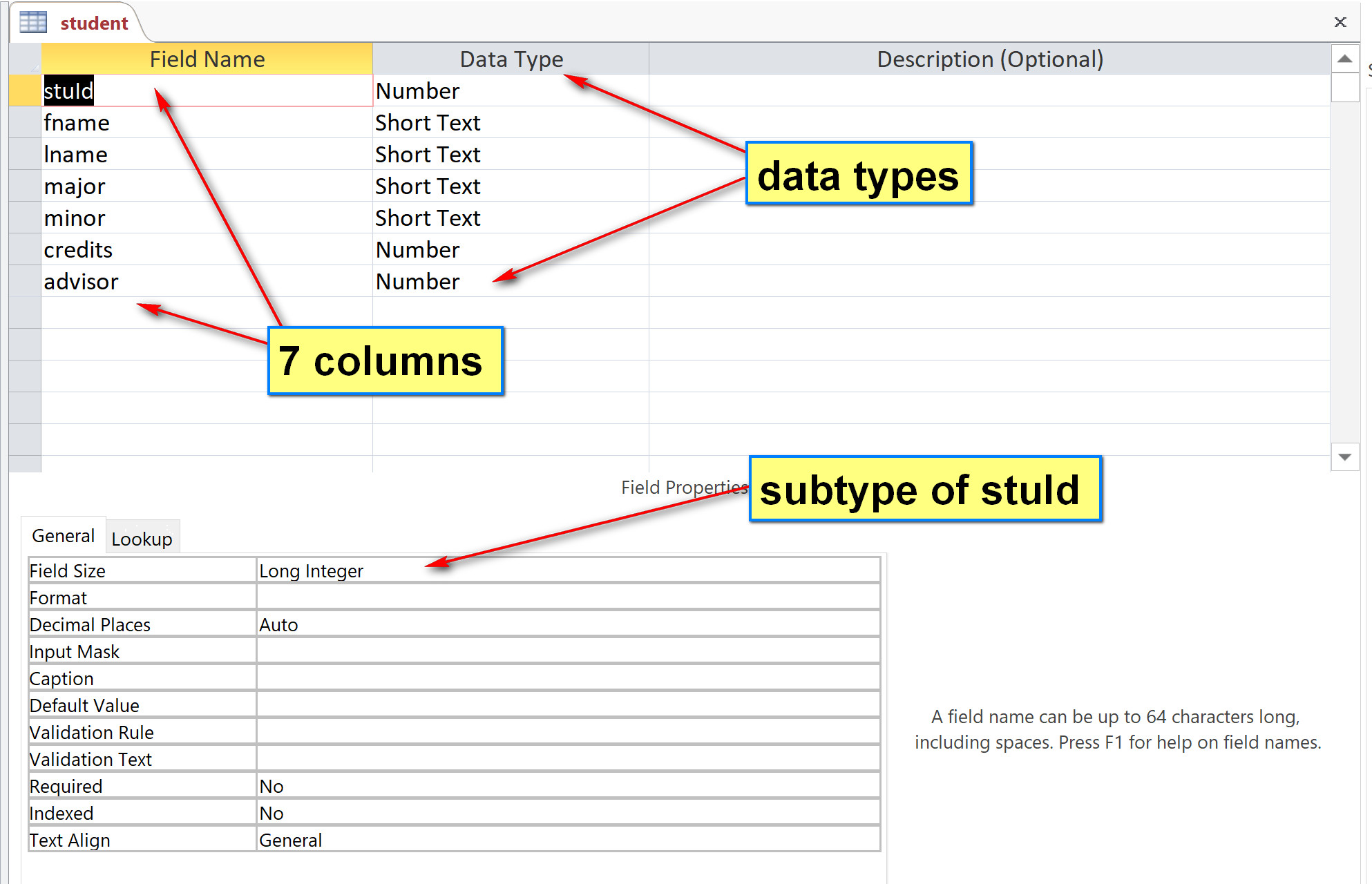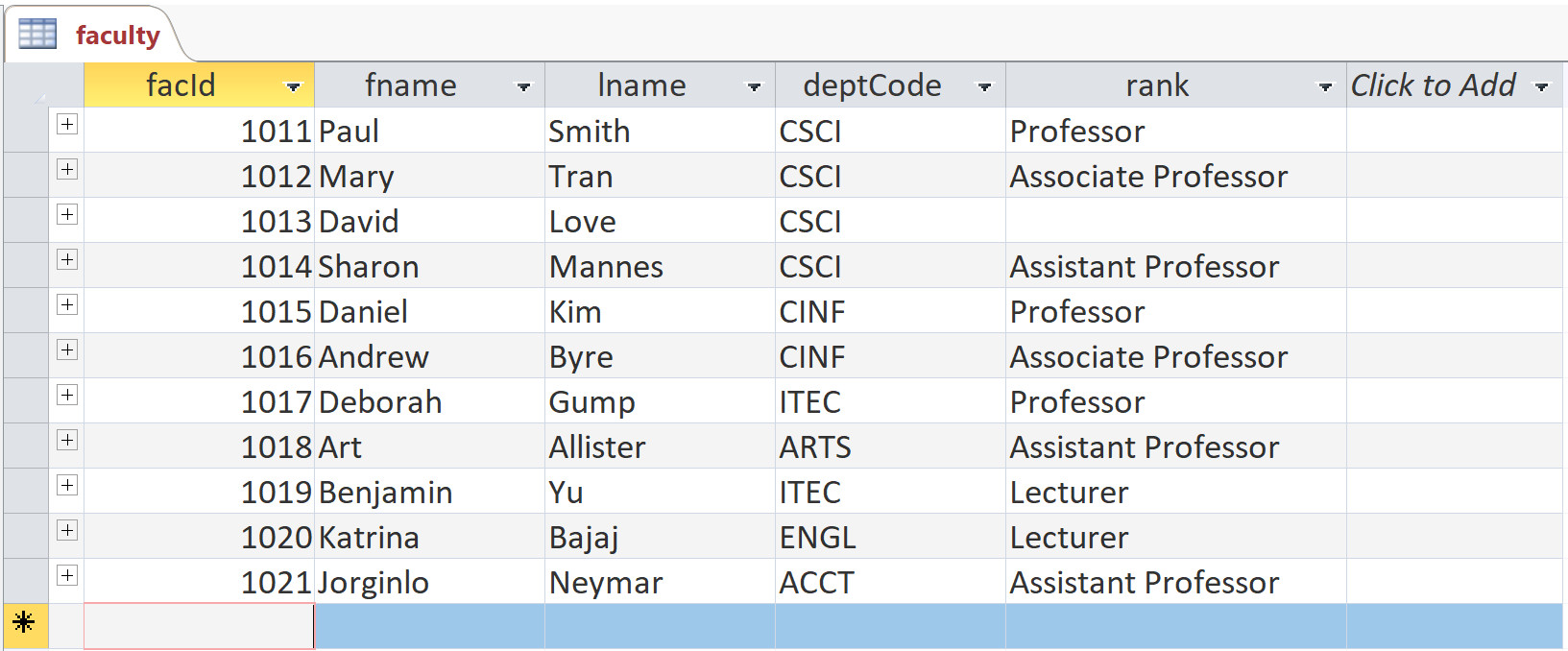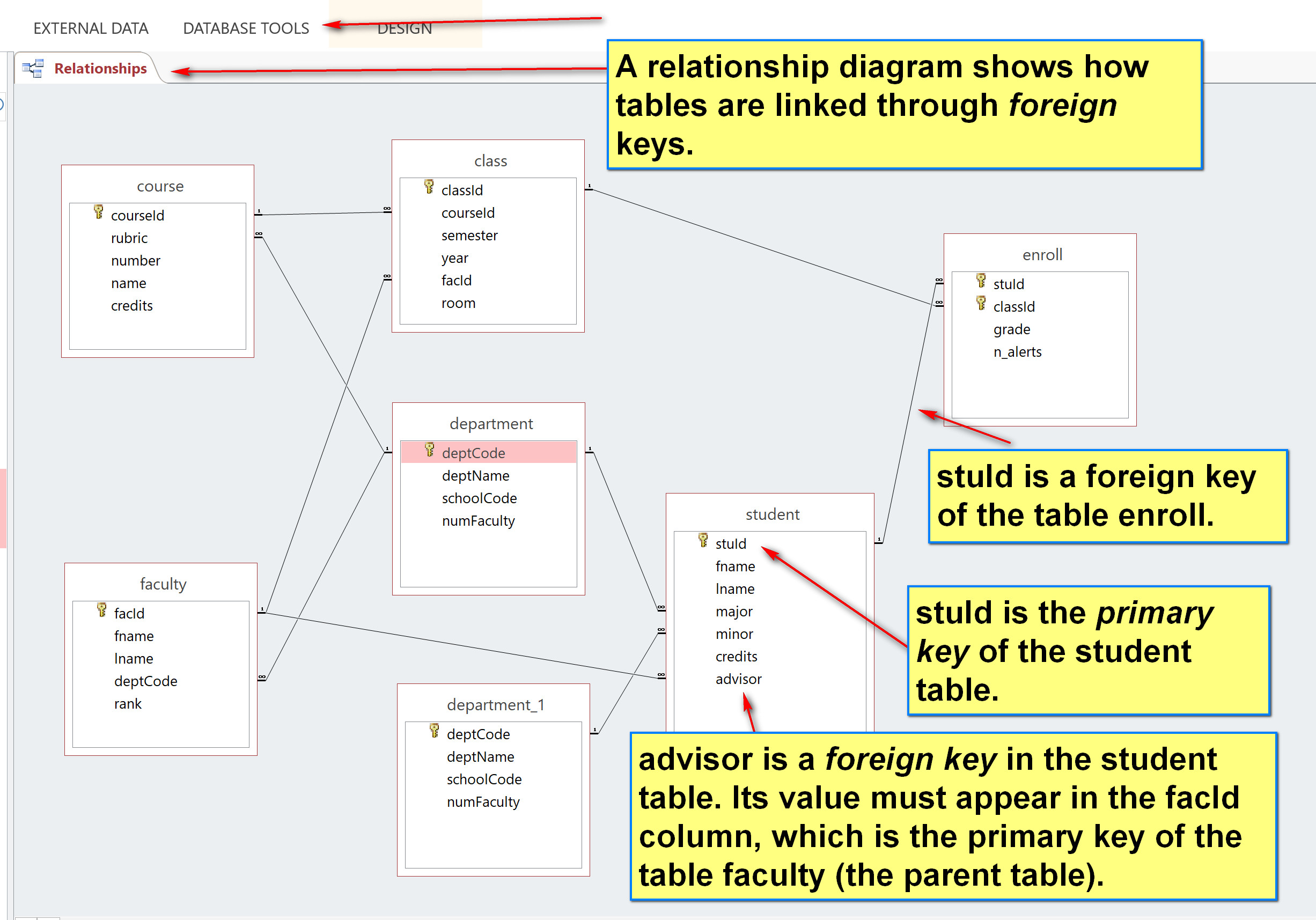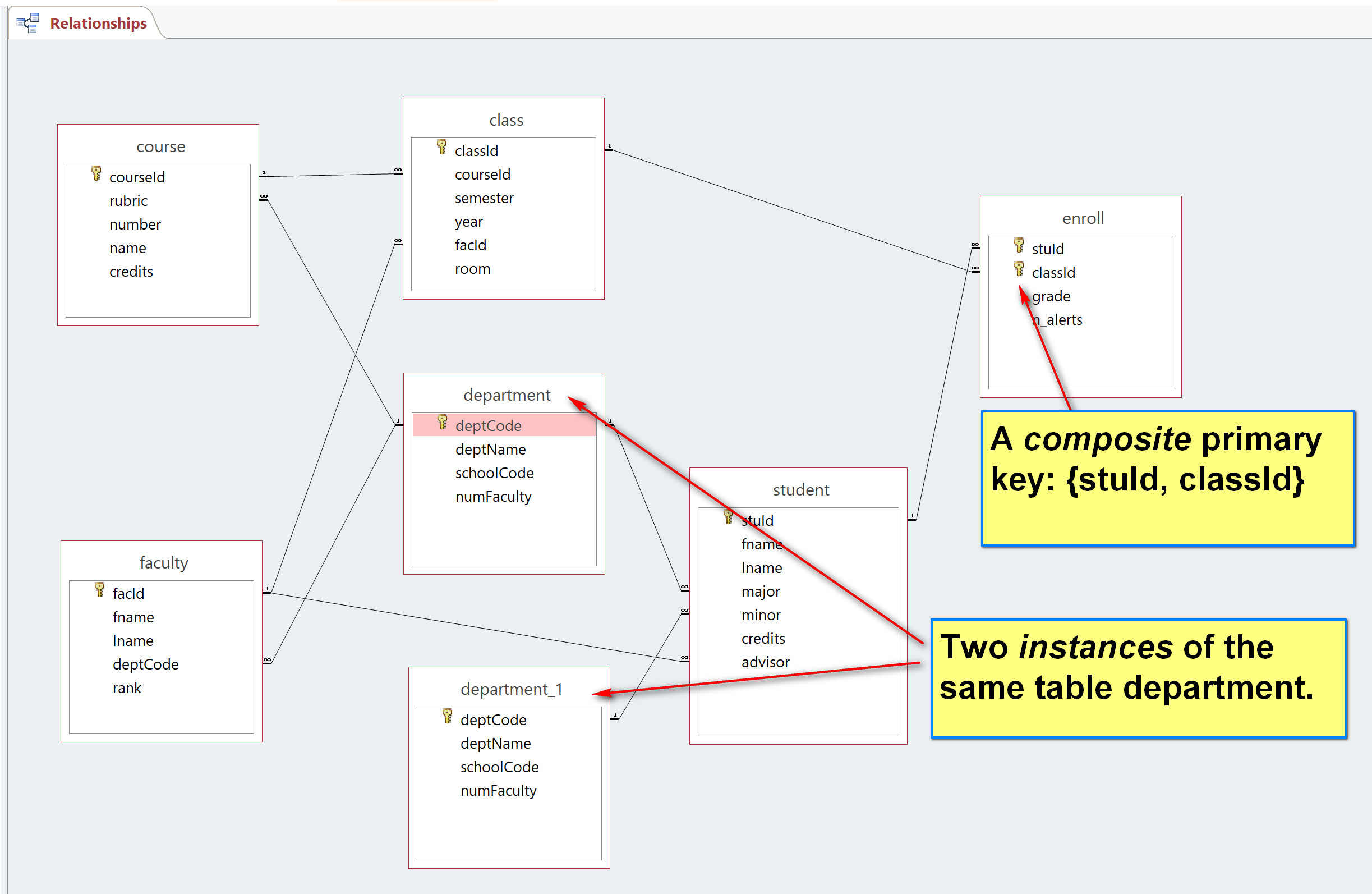Introduction to
Microsoft's Access
by K. Yue
1. Resources
- MS Access is a relational database management system.
- MS Access is a mature product and there are plenty of tutorials, examples, and resources.
- It is based on the relational model.
- To start, it is necessary to become familiar with the following basic concepts:
- table
- row
- column
- column value
- data type
- data subtype
- primary key
- foreign key
- relationship
- query
- SQL
- As a GUI tool, there are also various important views.
- Datasheet: allows insert/delete/update of individual row.
- Query: design queries to answer questions using a Query by Example approach
- Design: define tables, columns, keys, constraints, etc.
- There are also numerous tools, e.g. relationship diagram.
- Our course only requires less than 1% of the features provided by MS Access.
- As a starter, make sure you know how to:
- create a table
- populate a table
- create a simple query
- Many features not covered in Access in this course, such as:
- create form
- create report
The Relational Model
The basic relational data model in layman terms:
- A database is composed of a collection of tables (relations).
- A table contains many rows (tuples) and columns (attributes)
- Each row contains many column values.
- Every row of a table has the same columns.
- Values of the same column have the same data type.
- A table has a primary key to uniquely identify a row.
- Data from two tables R1 and R2 can be linked by a foreign key of R1, for example, a column A, which has a value in a column B, the primary key of the table R2 (known as the parent table).
Example:
Consider toyu_init.accdb:
The database toyu has six tables:
- student(stuId, fname, lname, major, minor, credits, advisor)
- department(deptCode, deptName, schoolCode, numFaculty)
- faculty(facId, fname, lname, deptCode, rank)
- course(courseId, rubric, number, name, credits)
- class(classId, courseId, semester, year, facId, room)
- enroll(stuId, classId, grade, n_alerts)
The student table contains 10 rows:

Student has seven columns:

Columns should be defined such as in a data dictionary. For example: for the table student:
Student: a row in the student table stores the information of a student.
- stuId: a unique id for the student
- fname: the first name of the student
- lname: the last name of the student
- major: the department code (deptCode) of the major of the student. It may not be declared.
- minor: the department code (deptCode) of the minor of the student. It may not be declared.
- credits: the number of completed credits of the student.
- advisor: the faculty id (facId) of the faculty who serves as the advisor of the student. A student may have no faculty advisor.
The table faculty:

Classroom exercise:
Provide the data dictionary for the table faculty.
Keys
Consider the stuId 100000 in the student table:
(stuId: 100000, fname: 'Tony', lname: 'Hawk', major:'CSCI', minor: 'CINF', credits:40, advisor:1011)
The column 'advisor' is a foreign key in the table student. Its value, 1011, must appear in the column 'facId', which is the primary key of the table faculty (the parent table).
A relationship diagram in Access shows foreign key relationship between tables.

A primary key may be a composite key (containing more than one columns) and a table can have multiple foreign keys.

Classroom exercise:
List the primary keys and foreign keys of all tables.
Classroom Demonstration
(1) Insert/Update/Delete
(a) Using toyu.accdb, add a new student:
(stuId: 100100, fname: 'Stephanie', lname: 'Smith', major:'MATH', minor: 'CINF', credits:33, advisor:1012)
(b) Lillian Johnson now has no minor.
(c) The class with id 11004 is canceled and its information should be deleted.
(2) New table: Create a new table School with columns:
- schoolCode: short Text, primary key
- schoolName: short Text
Insert the following four rows into the newly created table.
school
| schoolCode |
schoolName |
| BUS |
Business |
| CSE |
Science and Engineering |
| EDU |
Education |
| HSH |
Human Sciences and Humanities |
(3) Foreign key:
Make schoolCode a foreign key of the table department (referring to schoolCode of the table School).





